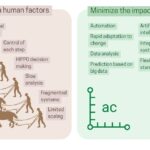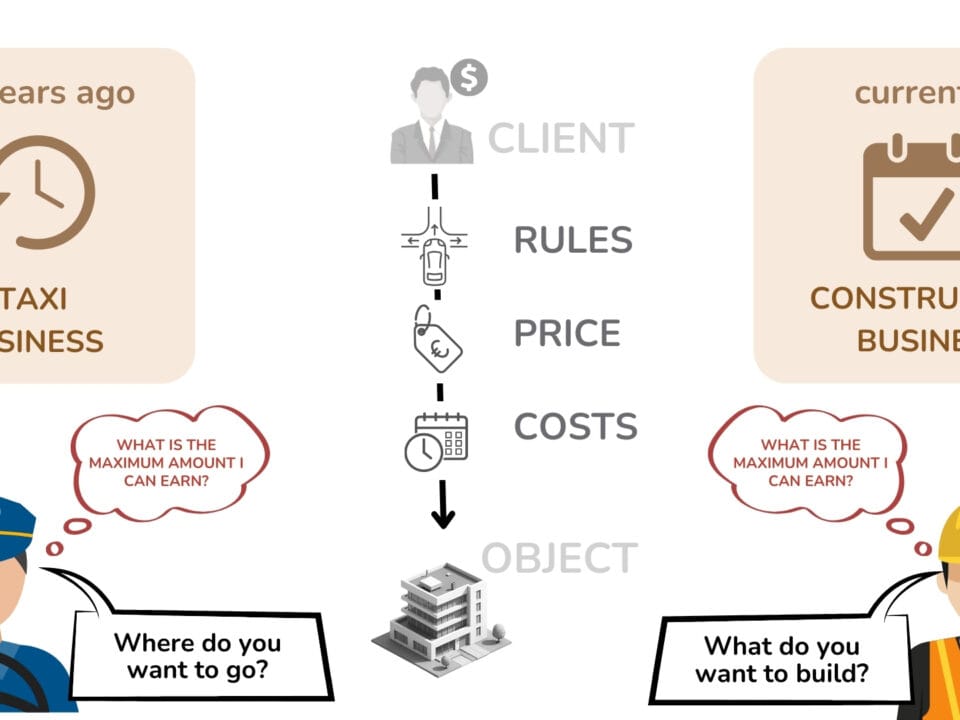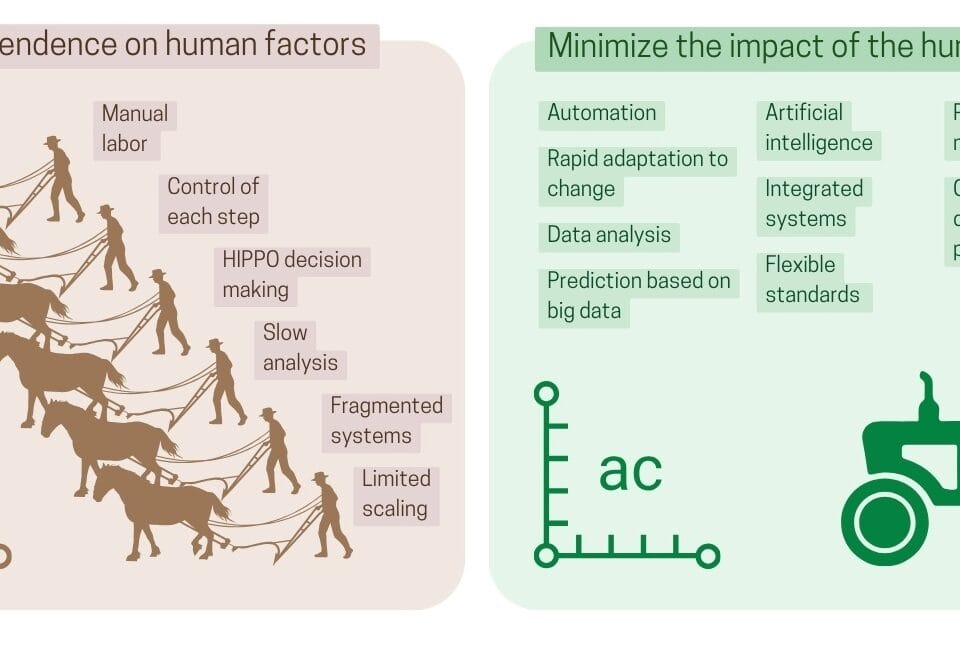In the history of mankind, each such technological leap has brought fundamental changes to the economy and society. Today, we are witnessing a new wave of transformation comparable in scale to the industrial revolution of the 19th century. However, while a hundred years ago the main driver of change was mechanical forces and energy technologies, now it is data and artificial intelligence.
Machine learning, LLM and AI agents change the very essence of applications, making traditional software stacks (discussed in the second part of the book) unnecessary (Fig. 2.2-3). All data logic is centered in AI agents rather than in hard-coded business rules (Fig. 2.2-4).
In the data age, traditional views of applications are being fundamentally transformed. We are moving toward a model where bulky, modular enterprise systems will inevitably give way to open, lightweight, specialized solutions.
In the future, only the underlying data structure will remain, and all interaction with it will be through agents working directly with the database. I truly believe that the entire application stack will disappear because it is simply not necessary when artificial intelligence interacts directly with the underlying database. I’ve spent my entire career working in SaaS – building companies, working in them, and to be honest, I probably wouldn’t launch a new SaaS business right now. And I probably wouldn’t invest in SaaS companies right now either. The situation is too uncertain. That’s not to say that there won’t be software companies in the future, just that they will look very different. Future systems will be databases with business logic brought into [AI] agents. These agents will work with multiple data repositories at the same time, not limited to a single database. All logic will move into the AI layer (M. Berman, “Microsoft CEO’s Shocking Prediction: ‘Agents Will Replace ALL Software’,” December 19, 2024.”).
– Matthew Berman, CEO Forward Future
The key difference of the new paradigm is the minimization of technological ballast. Instead of monumental complex and closed software systems, we will get flexible, open and quickly customizable modules that literally “live” inside the data flow (Fig. 7.4-1 – Apache Airflow, NiFi). The architecture of future process management envisions micro applications – compact, targeted tools, fundamentally different from massive and closed ERP, PMIS, CDE, CAFM systems. The new agents will be as adaptive, integrated and business task-oriented as possible (e.g. Low-Code/No-Code Fig. 7.4-6).
All the business logic will go to these [AI] agents, and these agents will perform CRUD [Create, Read, Update, and Delete] operations on multiple repositories, meaning they will not distinguish which backend is being used. They will update multiple databases, and all the logic will end up in the so-called AI -level. And once the AI layer is where all the logic is, people will start replacing backends. We’re already seeing a pretty high percentage of market wins in Dynamics backends and agent utilization, and we’re going to be moving aggressively in that direction, trying to bring it all together. Whether it’s in customer service or in other areas, like not just CRM, but our finance and operations solutions. Because people want more AI-driven business applications where the logic layer can be driven by AI and AI agents. […]. One of the most exciting things for me is Excel with Python, which is comparable to GitHub with Copilot. I mean, what we’ve done is: now that you have Excel, you should just open it up, run Copilot, and start playing with it. It’s no longer just understanding the available numbers – it will make a plan on its own. Just like the GitHub Copilot Workspace creates a plan and then executes it, it’s like a data analyst, using Excel as a tool to visualize rows and columns for analysis. So Copilot uses Excel as a tool with all its capabilities because it can generate data and has a Python interpreter.
– Satya Nadella, CEO, Microsoft, interview with BG2 channel December 2024 (BG2 Pod, “Satya Nadella | BG2 w/ Bill Gurley & Brad Gerstner,” December 12, 2024)
The transformation we are witnessing in the logic of office applications – moving from modular, closed systems to AI agents working directly with open data – is only part of a much larger process. It is not just a matter of changing interfaces or software architecture: the changes will affect the fundamental principles of work organization, decision-making, and business management. In construction, this will lead to a data-driven logic in which data becomes the centerpiece of processes, from design to resource management to construction monitoring.






















